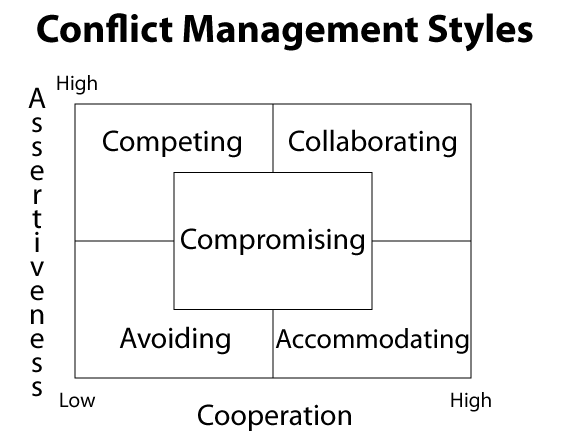Conflict-Handling Modes
The Thomas Kilmann conflict mode instrument, or TKI, is frequently used in conflict resolution training and identifies five distinct modes that people use to handle conflict (Thomas & Kilman). Understanding your conflict handling style may help you handle future conflicts more effectively.
- Avoiding - usually indicates the person who is avoiding is low on the assertiveness scale and is low on the cooperativeness scale. That means that the avoider doesn't take care of his/her needs and doesn't really help the other person either. The avoider would prefer to be somewhere else when conflict occurs.
- Accommodating - usually indicates the person who is accommodating is low on the assertiveness scale and is high on the cooperativeness scale. That means that the accommodater doesn't take care of his/her needs but sacrifices personal needs to cooperate and satisfy the other person.
- Competing - usually indicates the person who is competing is high on the assertiveness scale and is low on the cooperativeness scale. That means that the competitor takes care of his/her needs first. The competitor cares very little for the needs of others, does not try to cooperate, and wants to win.
- Compromising - usually indicates the person who is compromising is at the mid-point on the assertiveness scale and the mid-point on the cooperativeness scale. That means that the compromiser tries to find middle-ground by taking care of his/her needs as well as the needs of others. The compromiser does try to cooperate but not at his/her personal expense.
- Collaborating - usually indicates the person who is collaborating is high on the assertiveness scale and high on the cooperativeness scale. The collaborator takes care of his/her needs as well as the needs of others without compromising, or giving something up. The collaborator tries to understand where the other person is coming from so that a win-win situation is achieved, where neither party loses anything. Collaboration is the best way to manage conflict but it is also the most time-consuming.


